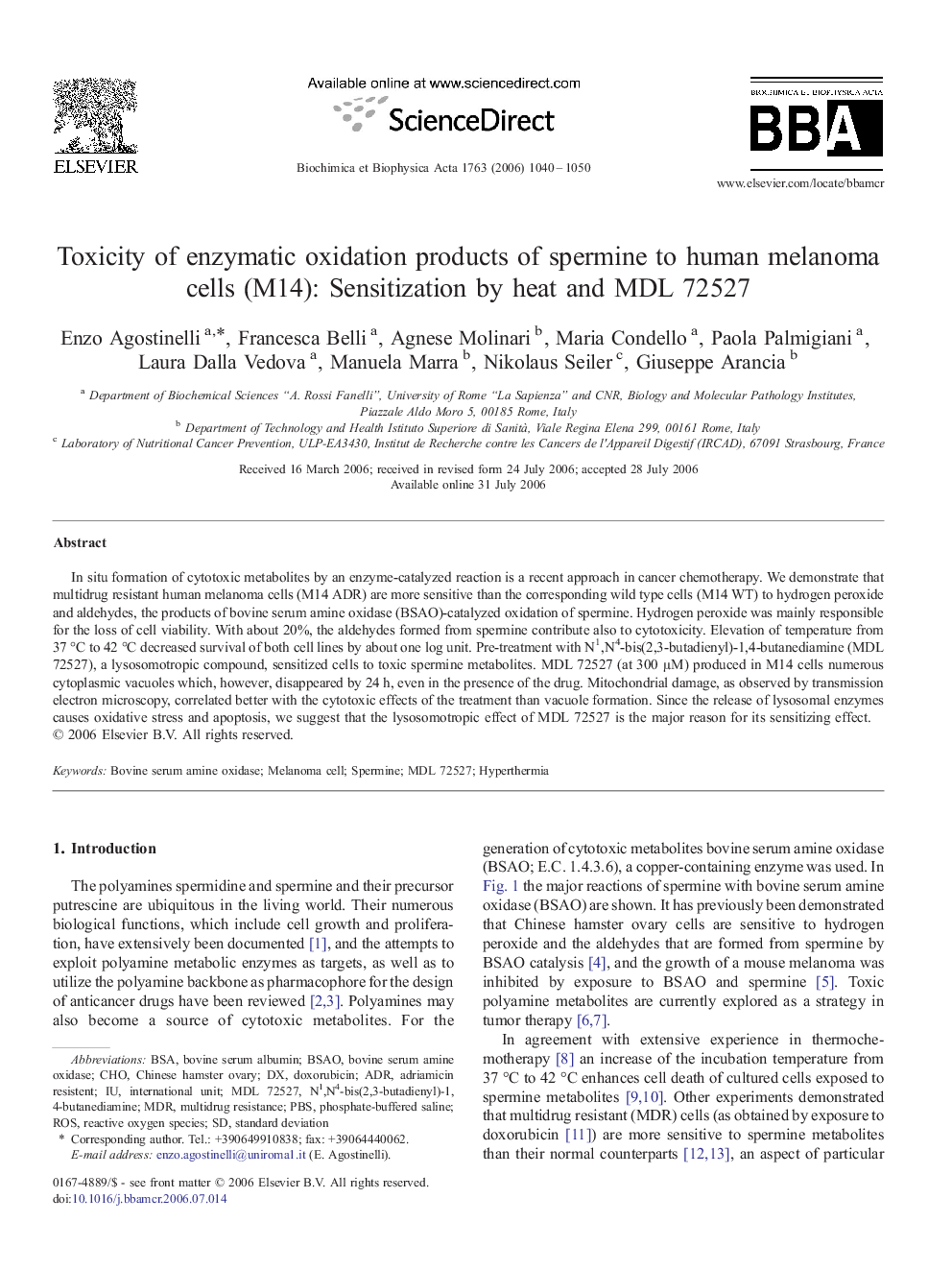| Article ID | Journal | Published Year | Pages | File Type |
|---|---|---|---|---|
| 1951678 | Biochimica et Biophysica Acta (BBA) - Molecular Cell Research | 2006 | 11 Pages |
In situ formation of cytotoxic metabolites by an enzyme-catalyzed reaction is a recent approach in cancer chemotherapy. We demonstrate that multidrug resistant human melanoma cells (M14 ADR) are more sensitive than the corresponding wild type cells (M14 WT) to hydrogen peroxide and aldehydes, the products of bovine serum amine oxidase (BSAO)-catalyzed oxidation of spermine. Hydrogen peroxide was mainly responsible for the loss of cell viability. With about 20%, the aldehydes formed from spermine contribute also to cytotoxicity. Elevation of temperature from 37 °C to 42 °C decreased survival of both cell lines by about one log unit. Pre-treatment with N1,N4-bis(2,3-butadienyl)-1,4-butanediamine (MDL 72527), a lysosomotropic compound, sensitized cells to toxic spermine metabolites. MDL 72527 (at 300 μM) produced in M14 cells numerous cytoplasmic vacuoles which, however, disappeared by 24 h, even in the presence of the drug. Mitochondrial damage, as observed by transmission electron microscopy, correlated better with the cytotoxic effects of the treatment than vacuole formation. Since the release of lysosomal enzymes causes oxidative stress and apoptosis, we suggest that the lysosomotropic effect of MDL 72527 is the major reason for its sensitizing effect.
